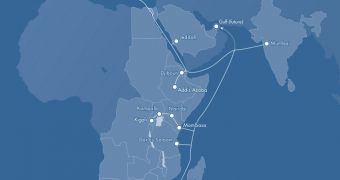Internet users in Southern and Eastern Africa have been experiencing problems for the past couple of days due to an undersea cable failure. The Seacom cable that links that part of Africa to Europe and Asia has been hit by a fault, possibly off the coast of Kenya. Repairs may take at least a week, but the Seacom Company has said it has already found alternatives to make up for the lost bandwidth.
“SEACOM experienced a submarine failure resulting in service downtime between Mumbai and Mombasa. Current investigations indicate that a repeater has failed on segment 9 of the SEACOM cable, which is offshore to the north of Mombasa. This unexpected failure affects traffic towards both India and Europe. Traffic within Africa is not affected,” Seacom said in a statement.
“Whilst the repair process itself will only take a few hours, the overall process may last a minimum of 6-8 days,” Seacom warned.
The cable, a portion of which links Mombasa, Kenya to Mumbai, India, is a vital life line for Internet services in the area. The cable has only been in service for a year and it brought broadband connectivity to the people in the area for the first time.
Users in the region started reporting issues on Monday and Seacom acknowledged the problem with the undersea cable. The company is now announcing that it has secured several alternative routes and will redirect traffic along those channels until the service can be fully restored.
“SEACOM has successfully secured a number of restoration options for its clients through other international connectivity providers, including cable networks. This effectively provides customers with alternatives to re-route services and restore connectivity,” Seacom is now saying.
This is the second time the cable has experienced this type of issue. A fault in the Mediterranean portion of the cable last April disrupted communications with Europe. An issue with the SEA-ME-WE 4 cable affected Internet connectivity in India and the Middle East earlier this year.

 14 DAY TRIAL //
14 DAY TRIAL //